2,4-Dinitrotoluene
Synonym(s):2,4-DNT
- CAS NO.:121-14-2
- Empirical Formula: C7H6N2O4
- Molecular Weight: 182.13
- MDL number: MFCD00007172
- EINECS: 204-450-0
- SAFETY DATA SHEET (SDS)
- Update Date: 2025-09-25 17:15:13
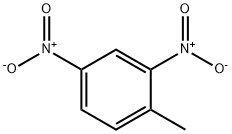
What is 2,4-Dinitrotoluene?
Description
2,4-Dinitrotoluene is the most common of the six dinitrotoluene isomers. Dinitrotoluene (DNT) or Dinitro is an explosive with the formula C6H3(CH3)(NO2)2. At room temperature it is a pale yellow to orange crystalline solid. It is a high explosive and one of the precursors for trinitrotoluene (TNT), which is synthesized through three separate nitrations of toluene. The first product is mononitrotoluene, DNT is the second, and TNT is the third and final product. Dinitrotoluene induced sensitization in an employee of a manufacturers of explosives, also sensitized to nitroglycerin.
Chemical properties
2,4-Dinitrotoluene (DNT) or dinitro is an organic compound with the formula C7H6N2O4. This pale yellow crystalline solid is well known as a precursor to trinitrotoluene (TNT) but is mainly produced as a precursor to toluene diisocyanate.
Physical properties
Both 2,4-Dinitrotoulene (2,4-DNT) and 2,6-Dinitrotoluene (2,6-DNT) are man-made solids that are pale yellow and have a slight odor. They are two of the six forms of a chemical called Dinitrotoluene (DNT). DNT is made by mixing toluene with nitric acid.
The Uses of 2,4-Dinitrotoluene
2,4-Dinitrotoluene is used largely, along with the 2,6-isomer, to make toluene diisocyanate. The DNT mixture is hydrogenated to yield the diamine that is reacted with phosgene to form the diisocyanate that is reacted with polyols to make polyurethane foams. DNT is also employed to some extent in manufacturing explosives.
The Uses of 2,4-Dinitrotoluene
A metabolite of TNT (2,4,6-trinitrotoluene). The metabolites of TNT
Definition
ChEBI: 2,4-dinitrotoluene is a dinitrotoluene in which the methyl group is ortho to one of the nitro groups and para to the other. It is the most common isomer of dinitrotoluene.
Production Methods
4-Nitrotoluene is nitrated with mixed acid (containing equimolar HNO3) under controlled conditions and continuous operation to give a 96 % yield of 2,4-dinitrotoluene. In Meissner units, for tighter control of the whole process, cocurrent flow is used in each step to separate mono- and dinitration, but countercurrent flow is used between them to prevent underor overnitration; this is also done in one-step nitration plants. After nitration, if separation of the resulting emulsion is difficult, the introduction of pure product can give surprisingly rapid separation.
Alternative processes yield mixed isomer products. When toluene is nitrated directly under similar conditions with 2.1 equivalents of nitric acid, the product is a ca. 80 : 20 mixture of 2,4-dinitrotoluene and 2,6-dinitrotoluene [606-20-2]. Nitration of 2-nitrotoluene, which is sometimes present in surplus, gives a ca. 67 : 33 mixture of 2,4- and 2,6-dinitrotoluene.
General Description
Heated yellow liquid. Solidifies if allowed to cool. Insoluble in water and more dense than water. Toxic by skin absorption, inhalation and ingestion. Easily absorbed through the skin. Produces toxic oxides of nitrogen during combustion. Used to make dyes and other chemicals.
Air & Water Reactions
Insoluble in water.
Reactivity Profile
DINITROTOLUENE is incompatible with strong oxidizing agents, caustics, active metals, tin and zinc . Decomposition occurs at 250°C. Prolonged heating below 250°C causes some decomposition, and the presence of impurities may decrease the decomposition temperatures. Decomposition is self-sustaining at 280°C. Containers may explode in a fire [USCG, 1999]. May react violently in the presence of a base or when heated to the boiling point. Attacks some forms of plastics, rubbers and coatings .
Health Hazard
Ingestion or overexposure to vapors from hot liquid can cause loss of color, nausea, headache, dizziness, drowsiness, collapse. Hot liquid can burn eyes and skin. Prolonged skin contact with solid can give same symptoms as after inhalation or ingestion.
Safety Profile
2,4-Dintirotoluene is used as an intermediate in the manufacture of polyurethanes. No information is available on the acute (short-term) effects of 2,4-dinitrotoluene in humans. Chronic (long-term) inhalation exposure to 2,4-dinitrotoluene affects the central nervous system (CNS) and blood in humans. A significant reduction in sperm count and normal sperm morphology was observed in one study of chronically exposed workers, while other studies have not reported this effect. No significant increase in cancer mortality was observed in a study of workers occupationally exposed to 2,4-dinitrotoluene by inhalation. Kidney, liver, and mammary gland tumors were observed in animals orally exposed to 2,4- dinitrotoluene. EPA has not classified 2,4-dinitrotoluene for potential carcinogenicity.
Potential Exposure
Compound Description (mixture of isomers, 25321-14-6): Tumorigen, Mutagen; Reproductive Effector; (602-01-7) Tumorigen, Drug, Mutagen, Primary Irritant; (121-14-2) Tumorigen, Mutagen; Reproductive Effector; Primary Irritant; (606-20-2) Tumorigen, Mutagen, Primary Irritant; (610-39-9) Mutagen, Primary Irritant. DNT is used in the preparation of polyurethane foams and manufacture of toluene diisocyanate for the production of polyurethane plastics; in the production of military and commercial explosives; to plasticize cellulose nitrate in explosives, to moderate the burning rate of propellants and explosives; in the manufacture of gelatin explosives; as a water-proofing coating for smokeless powders; as an inter mediate in TNT manufacture; and in the manufacture of azo dye intermediate.
First aid
If this chemical gets into the eyes, remove any contact lenses at once and irrigate immediately for at least 15 min, occasionally lifting upper and lower lids. Seek medical attention immediately. If this chemical contacts the skin, remove contaminated clothing and wash immediately with soap and water. Seek medical attention immediately. If this chemical has been inhaled, remove from exposure, begin rescue breathing (using universal precautions, including resuscitation mask) if breathing has stopped and CPR if heart action has stopped. Transfer promptly to a medical facility. When this chemical has been swallowed, get medi cal attention. Give large quantities of water and induce vomiting. Do not make an unconscious person vomit. The formation of methemoglobin may be delayed; medical observation is recommended. Note to physician: Treat for methemoglobinemia. Spectrophotometry may be required for precise determina tion of levels of methemoglobinemia in urine.
Environmental Fate
Biological. When 2,4-dinitrotoluene was statically incubated in the dark at 25 °C with yeast
extract and settled domestic wastewater inoculum, significant biodegradation with gradual
acclimation was followed by deadaptive process in subsequent subcultures. At a concentration of 5
mg/L, 77, 61, 50, and 27% losses were observed after 7, 14, 21, and 28-d incubation periods,
respectively. At a concentration of 10 mg/L, only 50, 49, 44, and 23% were observed after 7, 14,
21, and 28-d incubation periods, respectively (Tabak et al., 1981).
Photolytic. Low et al. (1991) reported that nitro-containing compounds (e.g., 2,4-dinitrophenol)
degrade via UV light in the presence of titanium dioxide yielding ammonium, carbonate, and
nitrate ions. By analogy, 2,4-dinitrotoluene should degrade forming identical ions.
Chemical/Physical. Wet oxidation of 2,4-dinitrotoluene at 320 °C yielded formic and acetic
acids (Randall and Knopp, 1980).
Metabolic pathway
The major biliary metabolite of 2,4-dinitrotoluene (2,4- DNT) in the rat is the glucuronide conjugate of 2,4- dinitrobenzyl alcohol and the minor metabolites are 2,4-dinitrobenzyl alcohol, 2,4-dinitrobenzaldehyde, 2- acetylamino-4-nitrotoluene, 4-amino-2-nitro or 2- amino-4-nitrobenzyl alcohol sulfate, 2,4-dinitrobenzoic acid, 2,4-diacetylaminobenzoic acid, and 2-amino-4- nitrobenzoic acid.
Storage
Color Code—Blue: Health Hazard/Poison: Store in a secure poison location. Prior to working with dinitro toluenes you should be trained on its proper handling and storage. 2,4-Dinitrotoluene must be stored to avoid contact with strong oxidizers, such as chlorine, chlorine dioxide, bromine, nitrates, and permanganates; caustics, such as sodium hydroxide and potassium hydroxide; and chemically active metals, such as tin or zinc, since violent reactions occur. Contact with strong oxidizers can cause fire or explo sions. Also, striking it or dropping it may cause detonation and explosion. Store in tightly closed containers in a cool, well-ventilated area away from heat (temperatures above 250C). Sources of ignition, such as smoking and open flames, are prohibited where 2,4-dinitrotoluene is used, han dled, or stored in a manner that could create a potential fire or explosion hazard. Use only nonsparking tools and equip ment, espe cially when opening and closing containers of 2,4-dinitrotoluene. Wherever 2,4-dinitrotoluene is used, handled, manufactured, or stored, use explosion-proof elec trical equipment and fittings. A regulated, marked area should be established where this chemical is handled, used, or stored in compliance with OSHA Standard 1910.1045.
Shipping
Dinitrotoluenes, solid or molten, require a ship ping label of “POISONOUS/TOXIC MATERIALS.” They fall in DOT Hazard Class 6.1 and Packing Group II.
Purification Methods
Crystallise it from Me2CO, isopropanol or MeOH. Dry it in a vacuum over H2SO4. It has also been purified by zone melting. It could be EXPLOSIVE when dry.[Beilstein 5 H339, 5 IV 865, 5 III 759.]
Incompatibilities
A strong oxidizer and explosive. Dust forms explosive mixture with air. Heat forms corrosive nitrogen oxide fumes and may cause explosion. Commercial grades will decompose at 250C/482F, with self-sustaining decomposition at 280C/536F. Contact with other strong oxidizers, caustics, and reducing agents may cause fire and explosions. Contact with nitric acid forms an explosive material. Contact with sodium oxide causes igni tion. Not compatible with chemically active metals, such as tin and zinc.
Properties of 2,4-Dinitrotoluene
| Melting point: | 67-70 °C(lit.) |
| Boiling point: | 300 °C |
| Density | 1,521 g/cm3 |
| vapor pressure | 1 mm Hg ( 102.7 °C) |
| refractive index | 1.4420 |
| Flash point: | 155 °C |
| storage temp. | 2-8°C |
| solubility | Soluble in acetone, ethanol, benzene, ether, and pyrimidine (Weast, 1986) |
| form | neat |
| pka | 13.53 (Perrin, 1972) |
| Water Solubility | 0.3 g/L (20 ºC) |
| BRN | 1912834 |
| Henry's Law Constant | 5.39(x 10-8 atm?m3/mol) at 25 °C (thermodynamic method-GC/UV spectrophotometry, Altschuh et al., 1999) |
| Stability: | Stable. Incompatible with oxidizing agents, reducing agents, strong bases. |
| CAS DataBase Reference | 121-14-2(CAS DataBase Reference) |
| NIST Chemistry Reference | Benzene, 1-methyl-2,4-dinitro-(121-14-2) |
| IARC | 2B (Vol. 65) 1996 |
| EPA Substance Registry System | 2,4-Dinitrotoluene (121-14-2) |
Safety information for 2,4-Dinitrotoluene
| Signal word | Danger |
| Pictogram(s) |
 Skull and Crossbones Acute Toxicity GHS06  Health Hazard GHS08  Environment GHS09 |
| GHS Hazard Statements |
H341:Germ cell mutagenicity H350:Carcinogenicity H373:Specific target organ toxicity, repeated exposure H410:Hazardous to the aquatic environment, long-term hazard |
| Precautionary Statement Codes |
P201:Obtain special instructions before use. P273:Avoid release to the environment. P280:Wear protective gloves/protective clothing/eye protection/face protection. |
Computed Descriptors for 2,4-Dinitrotoluene
| InChIKey | RMBFBMJGBANMMK-UHFFFAOYSA-N |
New Products
4,4-Difluoropiperidine hydrochloride tert-butyl 9-methoxy-3-azaspiro[5.5]undecane-3-carboxylate Indole Methyl Resin N-Isopropylurea N,N-Dicyclohexylcarbodiimide(DCC) MELDRUMS ACID 5-METHYLISOXAZOLE-4-CARBOXYLIC ACID Magnessium Bis glycinate Zinc ascorbate 1-bromo-2-butyne 2-acetamidophenol 9(10H)-anthracenone Erythrosin B, 4-Piperidinopiperidine 2-((4-morpholinophenylamino) (methylthio) methylene) malononitrile 2,4-dihydroxybenzaldehyde 3-(4-morpholinophenylamino)-5-amino-1H-pyrazole-4-carbonitrile Methyl 2-methylquinoline-6-carboxylate 2,6-dichloro-4-nitropyridine 4-Bromo-2-chlorobenzonitrile 2-(benzylamino)acetic acid hydrochloride 4-(tert-Butoxycarbonylamino)but- 2-ynoic acid 3,4-dihydro-2H-benzo[b][1,4]dioxepine 1-Phenyl-1-cycloprppanecarboxylicacidRelated products of tetrahydrofuran
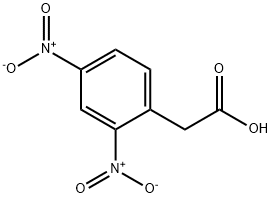
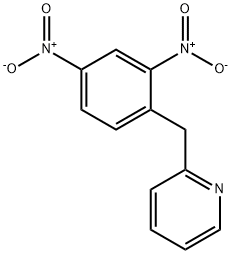
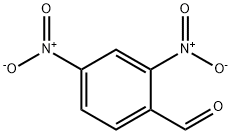
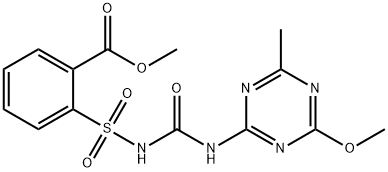




You may like
-
 3-(4-amino-1-oxoisoindolin-2-yl)-1-methylpiperidine-2,6-dione 98%View Details
3-(4-amino-1-oxoisoindolin-2-yl)-1-methylpiperidine-2,6-dione 98%View Details -
 1-methylindoline-2,3-dione 98%View Details
1-methylindoline-2,3-dione 98%View Details
2058-74-4 -
 614-19-7 98%View Details
614-19-7 98%View Details
614-19-7 -
 3112-85-4 Methyl phenyl sulfone 98%View Details
3112-85-4 Methyl phenyl sulfone 98%View Details
3112-85-4 -
 20677-73-0 (2,2-diethoxyethyl)methylamine 98%View Details
20677-73-0 (2,2-diethoxyethyl)methylamine 98%View Details
20677-73-0 -
 3-(4-(hydroxyamino)-1-oxoisoindolin-2-yl)piperidine-2,6-dione 98%View Details
3-(4-(hydroxyamino)-1-oxoisoindolin-2-yl)piperidine-2,6-dione 98%View Details -
 57381-49-4 2-bromo-4-chlorobenzonitrile 98%View Details
57381-49-4 2-bromo-4-chlorobenzonitrile 98%View Details
57381-49-4 -
 4,6-dichloropyrimidine-5-carbaldehyde 98%View Details
4,6-dichloropyrimidine-5-carbaldehyde 98%View Details
5305-40-8
